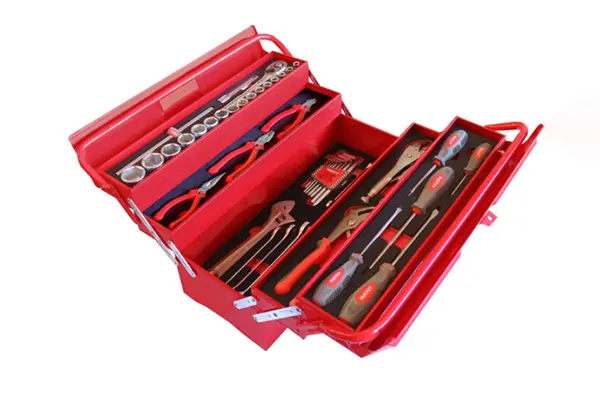Choosing the right material for a metal toolbox is essential for ensuring durability, security, and portability. Different metals offer varying advantages and disadvantages depending on the intended use, environmental conditions, and budget. This article explores the most common metals used in the construction of toolboxes and evaluates which might be the best choice for your needs.
Common Metals Used in Tool Boxes
1. Steel
Steel is one of the most popular materials for metal toolboxes due to its strength and durability.
- Advantages:
- Strength and Durability: Steel is extremely strong, making it ideal for heavy-duty use. It can withstand significant impact without deforming.
- Security: Steel toolboxes provide excellent security for valuable tools because they are difficult to break into.
- Longevity: With proper care, steel toolboxes can last many years.
- Disadvantages:
- Weight: Steel is heavy, which can make the toolbox cumbersome to transport.
- Corrosion: Steel is prone to rust if not properly coated or maintained, especially in humid or wet environments.
- Best For: Professional tradespeople who require a sturdy and secure tool storage solution that can withstand rough handling.
2. Aluminum
Aluminum is another popular choice, particularly for those who need a balance between strength and weight.
- Advantages:
- Lightweight: Aluminum is significantly lighter than steel, making it easier to carry around.
- Corrosion Resistance: Unlike steel, aluminum does not rust, making it ideal for use in damp environments or outdoor settings.
- Strength-to-Weight Ratio: While not as strong as steel, aluminum offers a good balance of strength and weight.
- Disadvantages:
- Cost: Aluminum toolboxes are generally more expensive than steel ones.
- Dents and Scratches: Aluminum is more prone to dents and scratches compared to steel.
- Best For Users who need a portable toolbox that can withstand exposure to moisture without the risk of rust.
3. Stainless Steel
Stainless steel combines some of the best properties of both steel and aluminum.
- Advantages:
- Corrosion Resistance: Stainless steel is highly resistant to rust and corrosion, making it suitable for all environments.
- Durability: It offers excellent durability and can handle heavy-duty use.
- Aesthetics: Stainless steel has a polished, attractive appearance that is easy to clean.
- Disadvantages:
- Weight: While not as heavy as regular steel, stainless steel is still heavier than aluminum.
- Cost: Stainless steel toolboxes tend to be more expensive due to the material cost and manufacturing processes.
- Best For: Professionals who require a combination of durability, corrosion resistance, and aesthetic appeal.
4. Plastic with Metal Reinforcements
While not purely metal, some toolboxes combine plastic with metal reinforcements to offer unique benefits.
- Advantages:
- Lightweight: The plastic base makes these toolboxes lighter than all-metal options.
- Durability: Metal reinforcements, such as corners and latches, enhance the durability of the box.
- Cost-Effective: Typically more affordable than all-metal toolboxes.
- Disadvantages:
- Strength: These toolboxes are not as strong as all-metal options and may not withstand heavy impacts as well.
- Corrosion: Metal reinforcements can still be prone to rust if not properly protected.
- Best For: Hobbyists or light-duty users looking for a cost-effective and portable solution.
Conclusion
When deciding which metal is best for a toolbox, consider the following factors: weight, durability, corrosion resistance, cost, and the specific requirements of your work environment.
- Steel is ideal for heavy-duty use and provides excellent security but can be heavy and prone to rust.
- Aluminum offers a good balance of strength and weight, with superior corrosion resistance, making it great for portability.
- Stainless Steel combines the best of both worlds, offering durability and corrosion resistance but at a higher cost.
- Plastic with Metal Reinforcements provides a lightweight and cost-effective alternative for less demanding applications.
Ultimately, the best choice will depend on your specific needs and priorities. For professionals requiring robust and secure storage, steel or stainless steel might be the best option. For those needing a lightweight and rust-resistant solution, aluminum is an excellent choice. By evaluating these factors, you can select the ideal metal toolbox to meet your needs.
Post time: 07-31-2024




